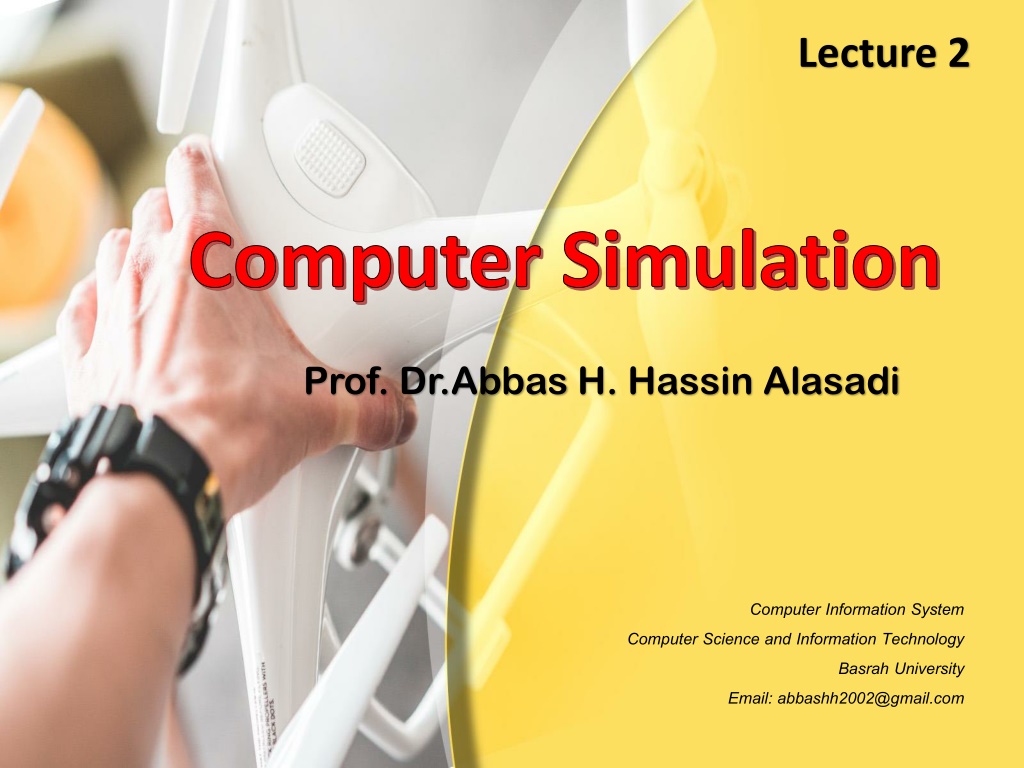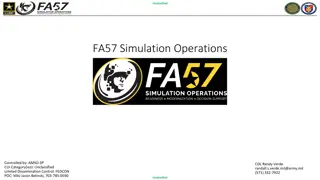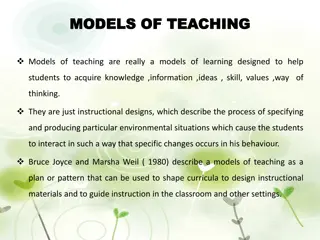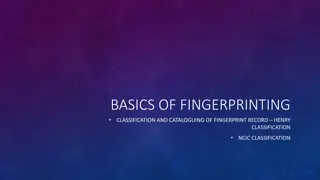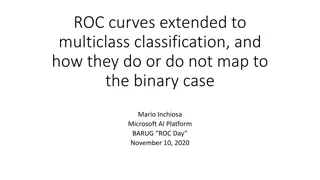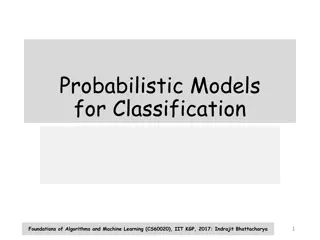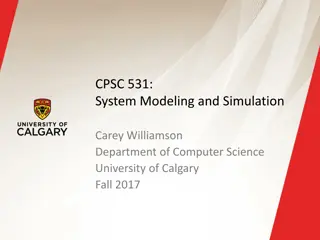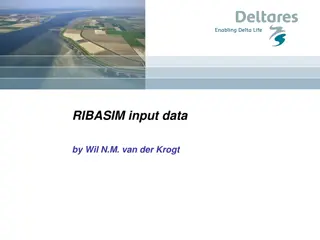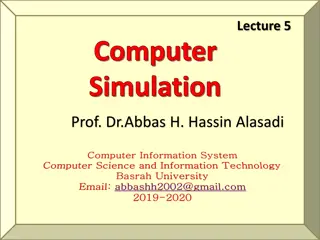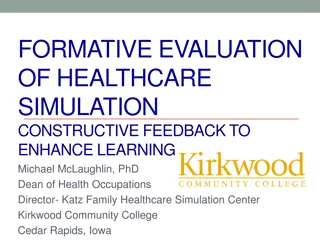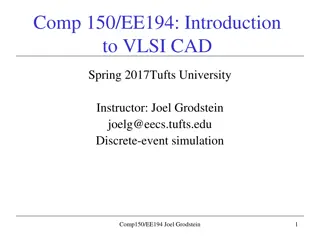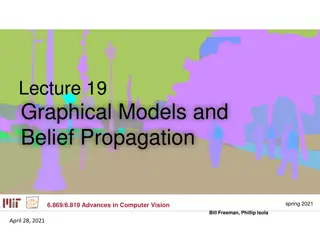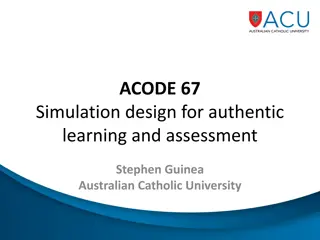Computer Simulation Models Classification
Computer simulation models are classified based on various characteristics such as static or dynamic, deterministic or stochastic, and discrete or continuous. Static models represent systems at a specific point in time, while dynamic models depict changes over time. Deterministic models involve no random variables, whereas stochastic models include random inputs leading to random outputs. Discrete models have state variables changing at specific points, such as customer arrivals in a bank, while continuous models involve continuous changes over time, like water levels behind a dam. Understanding the distinctions between these classifications is crucial for effective simulation design and analysis.
Download Presentation

Please find below an Image/Link to download the presentation.
The content on the website is provided AS IS for your information and personal use only. It may not be sold, licensed, or shared on other websites without obtaining consent from the author.If you encounter any issues during the download, it is possible that the publisher has removed the file from their server.
You are allowed to download the files provided on this website for personal or commercial use, subject to the condition that they are used lawfully. All files are the property of their respective owners.
The content on the website is provided AS IS for your information and personal use only. It may not be sold, licensed, or shared on other websites without obtaining consent from the author.
E N D
Presentation Transcript
Lecture 2 Computer Simulation Prof. Dr.Abbas H. Hassin Alasadi Computer Information System Computer Science and Information Technology Basrah University Email: abbashh2002@gmail.com
2 Types of Simulation Models Simulation models classified as being: static or dynamic model, deterministic or stochastic model, discrete or continuous model.
3 Static and dynamic models Static models and dynamic models are classification by the dependency on time A static simulation model, sometimes called a Monte Carlo simulation, represents a system at a particular point in time. For example, Mark Six, inventory level Dynamic simulation models represent systems in which state of the variables change over time. The simulation of a bank from 9:00am to 4:00pm is an example of a dynamic simulation. For example, service time, waiting time..
4 Deterministic and Stochastic models Classification by the nature of the variables A deterministic simulation contains no random variables. For example, deterministic arrivals would occur at a dentist s office if all arrived at the scheduled appointment time. A stochastic simulation model has one or more random variables as input. Random inputs lead to random outputs. For example, random arrival, random product demand, random incoming calls. Since the outputs are random, they can be considered only as estimates of the true characteristics of a model. For example, the simulation of a bank would usually involve random interarrival times and random service times.
5 Discrete and Continuous models Discrete and continuous models are defined in an analogous manner, classification by system nature. A discrete model is one in which the state variable(s) change only at a discrete set of points in time. The bank is an example of a discrete system, since the state variable, the number of customers in the bank, changes only when a customer arrives or when the service provided a customer is complete. Other examples, busy/idle counter, occupied/free machine.
6 Discrete and Continuous models cont. A continuous model is one in which the state variable(s) change continuously over time. An example is the head of water behind a dam( ). During and for some time after a rain storm, water flows into the lake behind the dam. Water is drawn from the dam for flood control and to make electricity. Evaporation ( ) also decreases the water level. But, continuous system can be approximated by a discrete-event system, depending on the expected preciseness and the objective of the study.
7 Three Model Levels Conceptual Very high level How comprehensive should the model be? What are the state variables, which are dynamic, and which are important? Specification On paper May involve equations, pseudocode, etc. How will the model receive input? Computational A computer program General-purpose PL or simulation language?.
The End of Lecture 2
